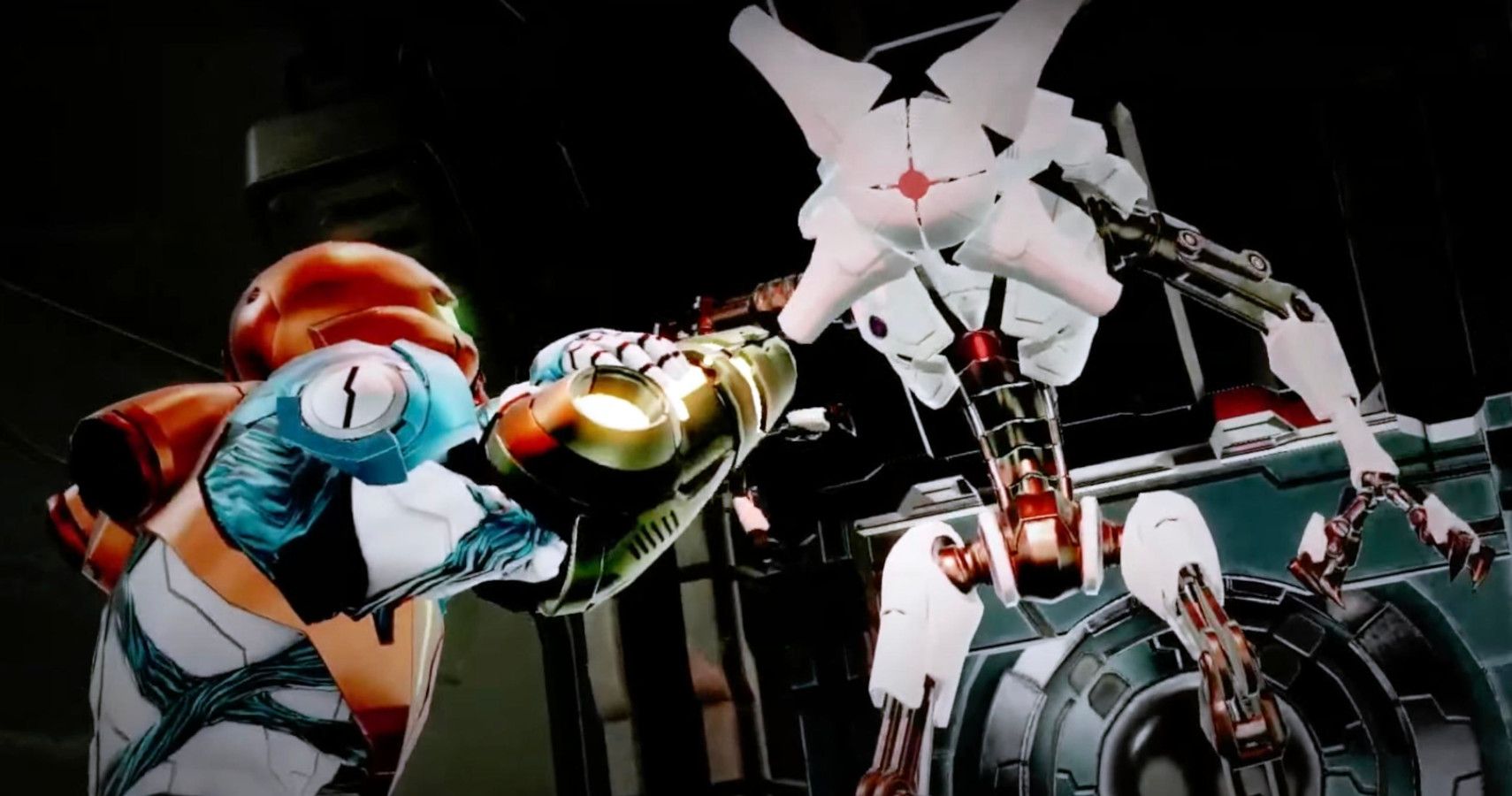The Metroid series is inextricably intertwined with the Alien film series. Metroid’s creators have often discussed the influence that Ridley Scott’s film had on the development of the original Metroid, and as the series progressed, each installment borrowed from and mirrored elements of the Alien franchise. There are small details and nods to the film series, like the name of Samus’s arch-nemesis, Ridley, but thematic and narrative similarities go much deeper than that.
Both Metroid and Alien star a tough-as-nails female lead who ends up being the only person standing between civilization and a predatory alien lifeform created by an advanced civilization. The Chozo statues in Metroid are the remnants of that civilization, and their design and purpose mirrors that of the Engineers in the Alien franchise. Both Alien’s Xeonomorphs and Metroid’s eponymous aliens attack by latching onto the faces of their victims. At the end of the first installment in both series, the heroine escapes just as the game’s/film’s setting explodes.
Most, if not all of these design and narrative similarities were intentional on the part of the Metroid creators. Designer and Super Metroid director Yoshio Sakamato, who serves as a producer on the upcoming Metroid Dread, said that Alien had a huge influence on the first Metroid, and that the team saw H. R. Giger’s work as an inspiration and a perfect match for the designs in Metroid.
As the Metroid series progressed, it continued to draw inspiration from the themes and narrative beats from the Alien films. Metroid 2 sees Samus travel to the source of the Metroid species on a mission to exterminate them, just as Ripley did in Aliens. The final boss in Metroid 2 is the Queen Metroid, just as Aliens ends with a final battle against the Queen Xenomorph. In the end of both stories, Ripley and Samus both symbolically become mothers to Newt and the Metroid Baby.
Those similarities barely scratch the surface of references and details that connect Metroid to Alien, but these kinds of connections are, for the most part, superficial. What really links Metroid to Alien isn’t an aesthetic so much as it is a feeling. Both franchises are defined by their claustrophobic settings, their anxiety-inducing pacing, and their otherworldly terror the likes of which both the audience and the hero have never seen, and therefore, seemingly cannot overcome. The Metroid series has forever been the closest thing we have to a video game adaptation of Alien (including every actual Alien game) until 2014 with the release of Alien: Isolation. Unsurprisingly, the next Metroid game is taking major queues from Alien once again.
In a poetically circular way, Alien: Isolation pulls a lot from the Metroid series. While it's mostly linear, there’s a lot of exploration, backtracking, and progression-gating by way of item upgrades -- all Metroidvania staples. What makes Alien: Isolation such a phenomenal Alien adaptation is the constant Xenomorph threat. Isolation captures the feeling of the films with a relentless cat and mouse game between you and an unstoppable, unkillable monster that stalks you throughout Sevastopol Station.
Which brings us to the appropriately named Metroid Dread. Thanks to the new E.M.M.I. enemies -- multipedal murder robots that can’t be stopped with any of Samus’s weapons -- Metroid Dread looks a lot like a 2D Alien: Isolation. Samus has new abilities like a slide and camouflage tech that allow her to escape and hide from the robots. Dread is a new direction for Metroid gameplay, but it’s pulling from the Alien franchise just as it always has. There’s an obvious feedback loop between the Alien films, the Metroid games, and Alien: Isolation, so bringing Isolation’s ideas into Dread feels like a perfect way to end the Metroid saga.

